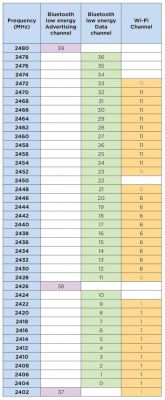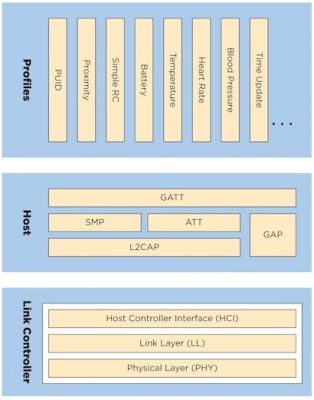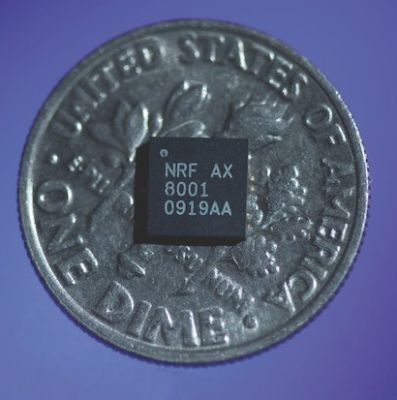Bluetooth low energy wireless technology uses many intelligent means to minimize power consumption.
This article refers to the address: http://
The Bluetooth 2.1+EDR/3.0+HS version (often referred to as "standard Bluetooth technology") has much in common with Bluetooth Low Energy (BLE) technology: they are low-cost, short-range, interoperable, robust wireless technologies. Works in the license-free 2.4GHz ISM RF band.
But there is one important difference between them: Bluetooth low energy technology was designed from the outset as ultra low power (ULP) wireless technology, while standard Bluetooth technology is mainly able to constitute a "low power" wireless connection.
Standard Bluetooth technology is a "connection-oriented" wireless technology with a fixed connection time interval, making it ideal for high-activity connections such as mobile phones connected to wireless headsets. In contrast, Bluetooth low energy technology uses a variable connection time interval, which can be set from a few milliseconds to a few seconds depending on the application. In addition, because BLE technology uses a very fast connection method, it can usually be in a "non-connected" state (saving energy). At this time, the two ends of the link only know each other, and only when necessary, the link is opened and then exhausted. It is possible to close the link in a short time.
The BLE technology's operating mode is ideal for transferring data from micro-wireless sensors (exchange data every half-second) or other peripherals such as remote controls that use fully asynchronous communication. These devices send very little data (usually a few bytes) and send very few times (for example, several times per second to once per minute, or even less).
BLE's two chip architectures
The Bluetooth low energy architecture consists of two chips: a single-mode chip and a dual-mode chip. The Bluetooth single-mode device is a new chip in the Bluetooth specification that only supports Bluetooth low energy technology - part of a technology optimized for ULP operation. The Bluetooth single-mode chip can communicate with other single-mode chips and dual-mode chips. The latter needs to use the Bluetooth low energy technology part of its architecture to send and receive data (refer to Figure 1). Dual-mode chips can also communicate with standard Bluetooth technology and other dual-mode chips using traditional Bluetooth architecture.

Figure 1 shows a dual-mode chip that will communicate with a single-mode device using the Bluetooth low-power portion of its architecture.
Dual mode chips can be used in any situation where a standard Bluetooth chip is currently used. This way, a mobile phone, PC, personal navigation device (PND) or other application with a dual-mode chip can communicate with all the traditional standard Bluetooth devices already in use on the market and all future Bluetooth low energy devices. However, because these devices require standard Bluetooth and Bluetooth low energy tasks, the dual-mode chip is not as optimized for ULP operation as a single-mode chip.
Single-mode chips can operate for a long time (months or even years) with a single-button battery (such as 3V, 220mAh CR2032). In contrast, standard Bluetooth technology (and Bluetooth low-power dual-mode devices) typically require at least two AAA batteries (10 to 12 times the power of the button battery, which can tolerate much higher peak currents) and, in most cases, the most Can only work for a few days or weeks (depending on the application). Note that there are also some highly specialized standard Bluetooth devices that can work with batteries that have a lower capacity than AAA batteries.
Ultra low power wireless technology
The three features of Bluetooth low energy technology enable ULP performance, which is maximum standby time, fast connection and low peak transmit/receive power consumption.
Wireless "on" time, as long as it is not very short, can drastically reduce battery life, so any necessary send or receive tasks need to be completed quickly. The first technique used by Bluetooth low energy technology to minimize wireless turn-on time is to search for other devices using only three "advertising" channels, or to announce their existence to devices seeking to establish a connection. In contrast, standard Bluetooth technology uses 32 channels.
This means that Bluetooth low energy technology scans other devices only by "on" for 0.6 to 1.2ms, while standard Bluetooth technology takes 22.5ms to scan its 32 channels. As a result, Bluetooth low energy technology requires 10 to 20 times less power to locate other wireless devices than standard Bluetooth technology.
It is worth noting that the use of three advertising channels is a compromise: this is a compromise between "on" time (corresponding to power consumption) and robustness in the very crowded portion of the spectrum (less advertising channels) The more opportunities a wireless device broadcasts on the selected frequency, the more likely it is to cause signal collisions. But the designers of the specification are quite confident in balancing this compromise—for example, the ad channel they choose does not conflict with the Wi-Fi default channel (see Figure 2).

Figure 2 shows that the advertising channel of Bluetooth low energy technology is carefully selected to avoid conflict with Wi-Fi.
Once the connection is successful, the Bluetooth low energy technology switches to one of the 37 data channels. During brief data transmissions, the wireless signals will be switched between channels in a pseudo-random manner using adaptive frequency hopping (AFH) techniques advocated by standard Bluetooth technology (although standard Bluetooth technology uses 79 data channels).
Another reason to require Bluetooth low energy technology to have the shortest wireless turn-on time is that it has 1 Mbps raw data bandwidth - larger bandwidth allows more information to be sent in less time. For example, another wireless technology with a bandwidth of 250 kbps needs to be turned on eight times longer (consuming more battery power) to send the same information.
Bluetooth low energy technology "completes" one connection (ie scanning other devices, establishing links, sending data, authenticating and ending properly) in just 3ms. Standard Bluetooth technology requires hundreds of milliseconds to complete the same connection cycle. Again, the longer the wireless turn-on time, the more battery power is consumed.
Bluetooth low energy technology can also limit peak power consumption in two other ways: with more "loose" RF parameters and sending very short packets. Both techniques use Gaussian Frequency Shift Keying (GFSK) modulation, but the Bluetooth low energy technology uses a modulation index of 0.5, while the standard Bluetooth technology is 0.35. The 0.5 index is close to the Gaussian Minimum Shift Keying (GMSK) scheme, which can Reduce the power consumption requirements of wireless devices (the reasons for this are more complicated, this article will not go into details). The lower modulation index has two other benefits, namely improved coverage and enhanced robustness.
Standard Bluetooth technology uses a longer packet length. When transmitting these longer packets, the wireless device must remain in a relatively high power state for a longer period of time, which tends to cause the silicon to heat up. This heating will change the physical properties of the material, which in turn changes the transmission frequency (interruption link) unless the wireless device is frequently recalibrated. Calibrating again will consume more power (and requires a closed-loop architecture that makes the wireless device more complex, pushing up the price of the device).
In contrast, Bluetooth low energy technology uses very short data packets - this keeps the silicon at a low temperature. Therefore, Bluetooth low energy transceivers do not require a more energy-intensive recalibration and closed-loop architecture.
Extend the Bluetooth ecosystem
Bluetooth low energy technology is ideally suited for applications where standard Bluetooth technology is not available due to strict power constraints. This is the first time that an electronic designer has been provided with ULP wireless technology with strict interoperability, which is expected to bring hundreds of new applications.
Some early signs of application may be that the Bluetooth SIG is trying to further supplement the Bluetooth version 4.0 core specification (including BLE) by releasing the first profile: for configurations such as personal user interface devices (such as watches), Some applications, such as remote control, distance sensor, battery status and heart rate monitor, optimize the Bluetooth low energy general purpose chip. Other health and fitness monitoring configurations, such as blood glucose meters and sphygmomanometers, periodic rhythms, and periodic singular power supplies, will be introduced later (see Figure 3).

Figure 3 shows the architecture of Bluetooth Low Energy Technology in Bluetooth Core Specification Version 4.0. The corresponding configuration is coming soon.
Let's take a look at how Bluetooth low energy technology works in two potential applications: distance sensing alarms and indoor positioning (sometimes called indoor GPS).
Mobile phone and portable PC manufacturers use dual-mode chips because they are only slightly more expensive than standard Bluetooth technology, but offer a much richer set of features. Mobile phone manufacturers can use this to provide a security device that includes a watch. The watch will periodically communicate with the phone, and if the phone moves outside of a certain range - and thus cannot be contacted by the watch worn by the user - it will automatically lock and the watch will sound an alarm. This will prevent accidental loss of the phone and play an important deterrent to any potential thief.
The proximity sensor alert application can also be extended to laptops to lock the laptop when the user moves outside of a certain range (perhaps when a nearby user presses a key on the watch to unlock it). This application can also be used as a child safety device to keep the watch on hand when the child and the parent are within a certain range, and to sound an alarm when the child runs out of the set range.
The low cost and low maintenance of Bluetooth low energy sensors (because the batteries do not need to be replaced frequently) will encourage widespread use in public places. One key application is indoor positioning (where there is no GPS signal). Sensors distributed around large public buildings (such as airports or train stations) will be constantly broadcasting their location information. A mobile phone equipped with Bluetooth low energy technology can display these location information to its owner when it passes through this range.
The sensor can also send other information such as flight departure time and boarding gates, entertainment venues or special offers from nearby stores (see Figure 4).

Figure 4 shows that the Bluetooth low energy sensor placed around the airport terminal can continuously broadcast its location information, and the mobile phone passing through this range can then display the information.
Final step
A number of chip vendors have designed Bluetooth low energy chips and have provided samples and development kits to preferred customers. The current Bluetooth version 4.0 specification allows these companies to certify that their chips meet the Bluetooth low energy specifications.
For example, Nordic has available samples of Bluetooth low energy chips, Blue (MicroBlue), and the Blue Prototype Kit for key customers. The first product in the Blue family is the nRF8001, a single-mode peripheral solution in a 32-pin 5x5mm QFN package that integrates a fully embedded radio, link controller and host subsystem – very Suitable for applications such as watches, sensors and remote controls (see Figure 5).

Figure 5 is Nordic's Blue nRF8001, a single-mode peripheral solution for applications such as watches, sensors and remote controls, will be one of the first Bluetooth low energy chips on the market.
The last piece of Bluetooth low energy is about to be completed. The Bluetooth Technology Alliance said that the first batch of configurations, such as distance sensing alarms, will begin in a few months. This means that electronic designers can get the actual product development by getting fully certified chips by the end of the year.
We make OBD connector with terminal by ourselves, soldering type and crimping type are both available. Also 12V and 24V type. OBD1, OB2, J1939, J1708, J1962, etc. Also molded by different type, straight type or right-angle type. The OBD connector cables used for Audi, Honda, Toyota, BWM, etc. We have wide range of materials source , also we can support customers to make a customized one to replace the original ones.
OBD Connectors,Sae J1708 Connector,Sae J1939 Connector,OBD2 Diagnostic Connectors,Diagnostic Connector,Deutsch Diagnostic Connector
ETOP WIREHARNESS LIMITED , https://www.etopwireharness.com